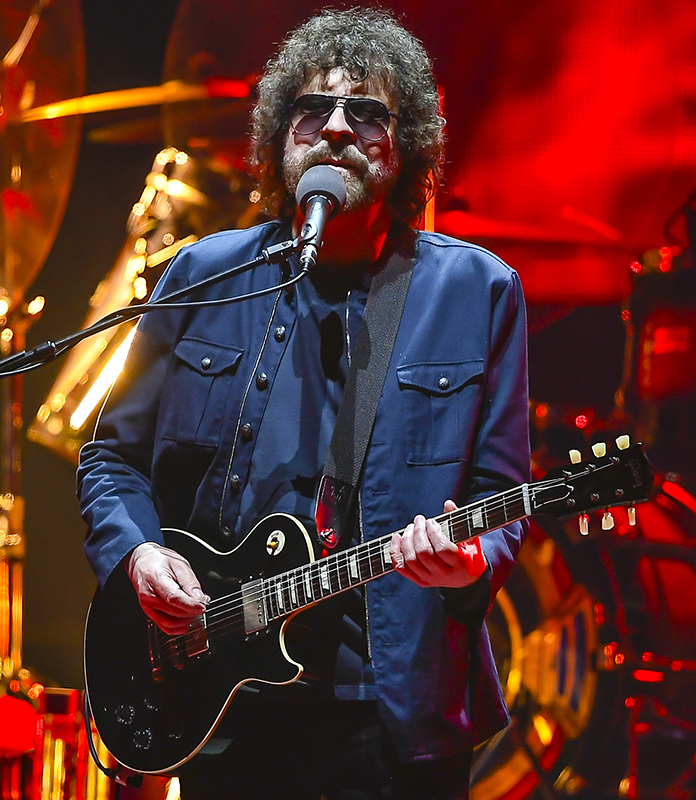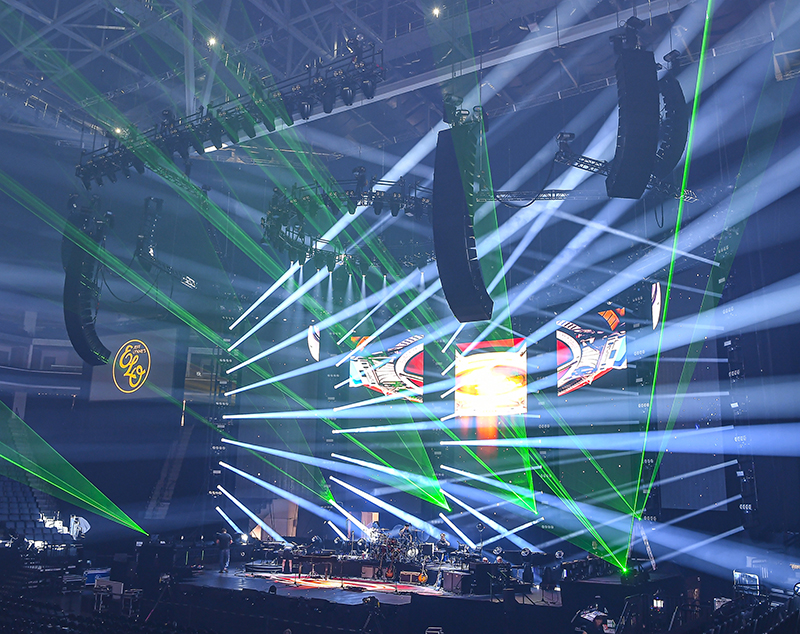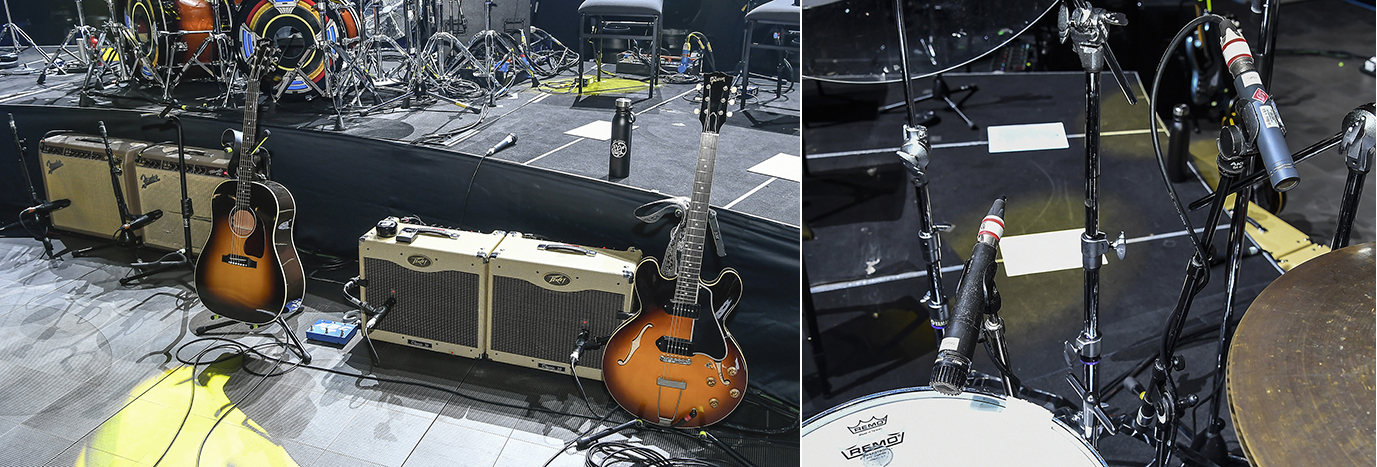For the fans of Jeff Lynne’s ELO, 2018 and 2019 have been banner years. Following on the heels of a 10-date tour last year after an absence from North America’s shores for more than 30 years, Lynne and his band returned again this summer, playing at 20 stops stretching from Vancouver, B.C. to Pittsburgh, PA and beyond.
Dazzling audiences with a healthy dose of surprise selections and deeper hits with requisite favorites like “Turn to Stone,” “Livin’ Thing,” and the exuberant, anthemic closer “Mr. Blue Sky,” Lynne and ELO (Electric Light Orchestra) solidified their status as masters of their craft.
Having first met Lynne at BBC Radio 2’s Festival in a Day in London’s Hyde Park back in September of 2014, Gary Bradshaw returned to the U.S. and Canada this year, reprising a role at front of house he’s been getting increasingly comfortable with. “I grew up listening to ELO,” he related recently while at home in the UK following the end of ELO’s latest swing through North America in August. “So when I first met Jeff and found myself discussing the mix aspects of ‘Evil Woman’ and his other hits, it was hard for me to get my arms around the fact that there I was standing next to the guy who wrote, sang, and produced them.”
While Skan PA is widely known for its work with Lynne and ELO, for this summer’s tour just past, Newbury, UK-based Skan took care of the control end and deferred to Nashville’s Spectrum Sound when it came to stacks and racks.
“However, we still maintained the type of packaging we’re used to and is expected of a Skan show,” says system engineer Finlay Watt, a man who was given a birth name that sounds as if it predetermined his career in pro audio. “The Spectrum guys were very accommodating with things like having one giant amp cart per side with all of the looms on top, along with other things. This was great for us because it meant we saw minimal differences in terms of our real estate. I appreciated it too because I’m a neat freak, just like the crew at Skan.”

Making It Make Sense
Taking a count of the Spectrum-supplied elements found in the PA, 64 KSL enclosures from d&b audiotechnik spanned across the main and side hangs along with 24 d&b V12 cabinets that served as extreme side hangs. Ten J-SUBs running in normal, non-infra mode were positioned in an array across the front of the stage from left to right, individually positioned in a straight line but arc-delayed and rotating outward as they departed from center in five-degree increments.
More than 20 d&b D80s per side provided amplification, with a pair of redundant spares available on each bank. The entire flown system was array processed.
In addition, a dozen d&b Y10P boxes were carried as well for use as fills, with eight usually standing in as the regular count. The stage itself featured shelves for some of these boxes, while another per side was mounted on a stand behind the outermost subs, and another yet resided atop a stage left monitor and the stage right guitar bunkers to cover the extreme sides below the 220-degree hangs.

“The flown system was designed to cover from the barrier to the back row,” Watt relates, “The fills were used more as a tool for impact, detail, and image, and less as a necessity for coverage. I focused on image a lot when tuning, as it could get lost easily. In certain areas I found that it was important to listen to where the sound was coming from in terms of the audience’s perspective. I didn’t want to be looking at the stage 20 feet in front of me and hear something from 30 feet above my head. That wouldn’t have made sense spatially or psychologically.
“Imaging was mostly incorporated into the measurement and tuning process then tweaked as required when I listened to content,” he continues. “For timing and tuning I used (Rational Acoustics) Smaart V8 and a combination of Earthworks and iSEMcon microphones, and most importantly, my ears. Once I had the room measured, drawn out, and the PA was designed, I spent some more time making sure my d&b R1 remote control software views were correct. I ran a lot of custom pages to monitor all aspects of the system.”
Out at FOH, Gary Bradshaw relied on a DiGiCo SD7 console. “I think I’ve used most, if not the entire DiGiCo range of consoles on various projects over the years,” he says, “and have enjoyed working on all of them. The beauty of the SD7 is found in the built-in redundancy, four banks of faders, and three big screens. The layout of the desk is very straightforward and easy to navigate, and audio quality is second to none. The only effect I used for ELO was a delay that can be heard in a couple of songs.
“There was absolutely no reverb on anything. I used a few Waves plug-in compressors. A dbx 160 ran across the drum sub-group, there was a CLA-3A on bass guitar, CLA-2As on each of the acoustic guitars, and a CLA-76 on the electric 12-string guitar that gets used on the Traveling Wilburys song ‘Handle With Care.’ Vocal compression and de-essing was done with onboard channel processing. I used the virtual soundcheck option all the time. It helped with the fine-tuning needs particular to the room of the day. The DiGiCo’s capability to hone in in on a particular drum or guitar, replay a chorus, and check the balance of backing vocals was worth its weight in gold.”

Greg DeTogne

Martin Audio Delivers The Coverage For The K’s Album Launch In The UK
dBS Solutions deploys ground-stacked Wavefront Precision arrays joined by SXCF118 cardioid subwoofers and more in support of indie rock band's performance at Parr Hall ...read more →

JPJ Audio Standardizes On NEXO For Stage Monitoring In Australia
Member of the Clair Global group equipping 20 live music venues across the country with P15 loudspeakers as stage monitors following a demo by ...read more →

Signal To Noise, Episode 249: Sam Kusnetz Of QLab & Founder Of Team Sound
Talks about using QLab across all aspects of live sound, from theatre to corporate audio as well as lesser known features, some of the ...read more →

Listen Technologies Promotes Mikey Shaffer To Senior Sales Director
Joined the company in 2016 and now leading the sales team and serving as the primary liaison for dealer channels, regional sales managers, sales ...read more →

“Little Women” Presented In Santa Barbara With Support From Ocean Way Audio
Recent production of the Broadway music at the Granada Theatre reinforced by AeroWave loudspeakers deployed in a left-center-right (LCR) configuration.

KGEAR Introduces New GH8 Loudspeaker
Point source model outfitted with an 8-inch full-range driver and offers a unique cabinet design and cardioid dispersion pattern for lower emission on the ...read more →

Sensible Music Group In London Upgrades With MC² Audio
Multi-space complex upgrades monitoring in both its main studio and rehearsal rooms with Delta 80 DSP amplifiers as well as several non-DSP versions.

HH Audio Proves To Be Right Fit For New Ai Pub In Cambodia
700-capacity venue hosts a range of live bands and DJ sets that are supported by a sound reinforcement system utilizing TNA line arrays and ...read more →

Lawo Helping To Train The Next Generation In Vienna
University of Music and Performing Arts Vienna outfitted with AoIP infrastructure utilizing an mc²56 MkIII audio production console with an A__UHD Core joined by ...read more →

Synthax Announces New RME DPS-2 Power Supply
Linear unit offers a range of features, including two differently filtered outputs, with a housing and front panel based on the ADI-2 series in ...read more →

New Barstool Nashville Debuts With DAS Audio
Accardi Designs develops system for multi-level venue on Broadway utilizing a range of VANTEC arrays, E11EVEN Sound loudspeakers, Quantum Series subwoofers and much more.

Two Florida Live Theater Venues Equipped With DiGiCo
Artis—Naples and The Parker in Fort Lauderdale each have unique and specific sound requirements met by new Quantum225 consoles supplied by Carlton Audio Services.







